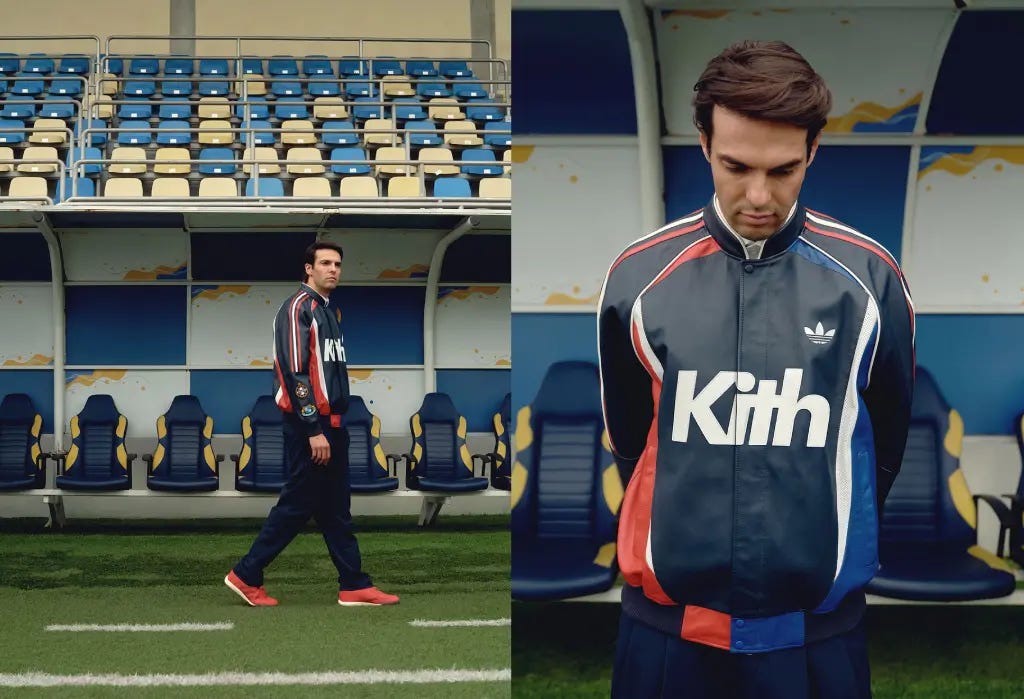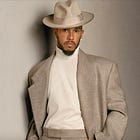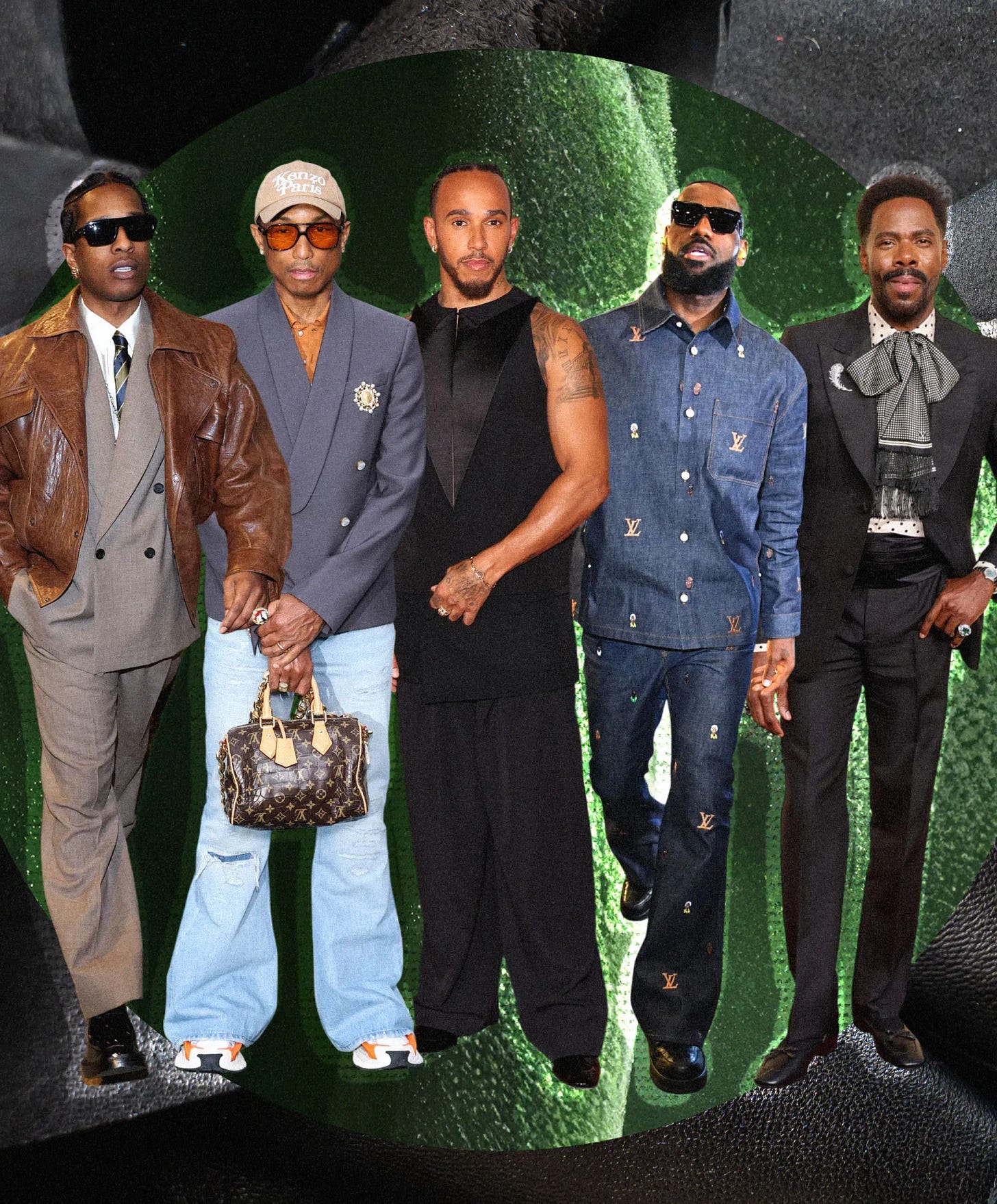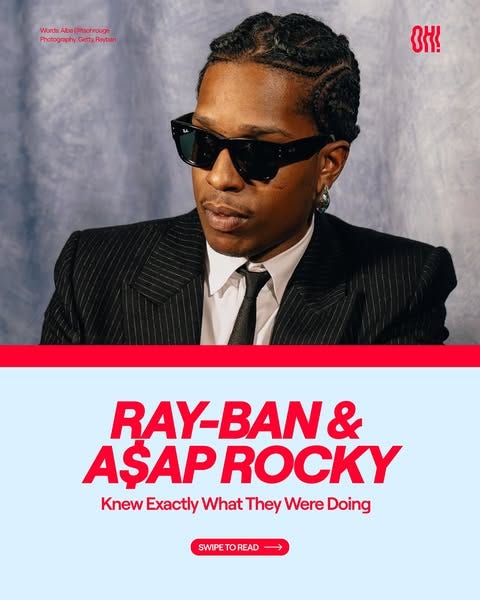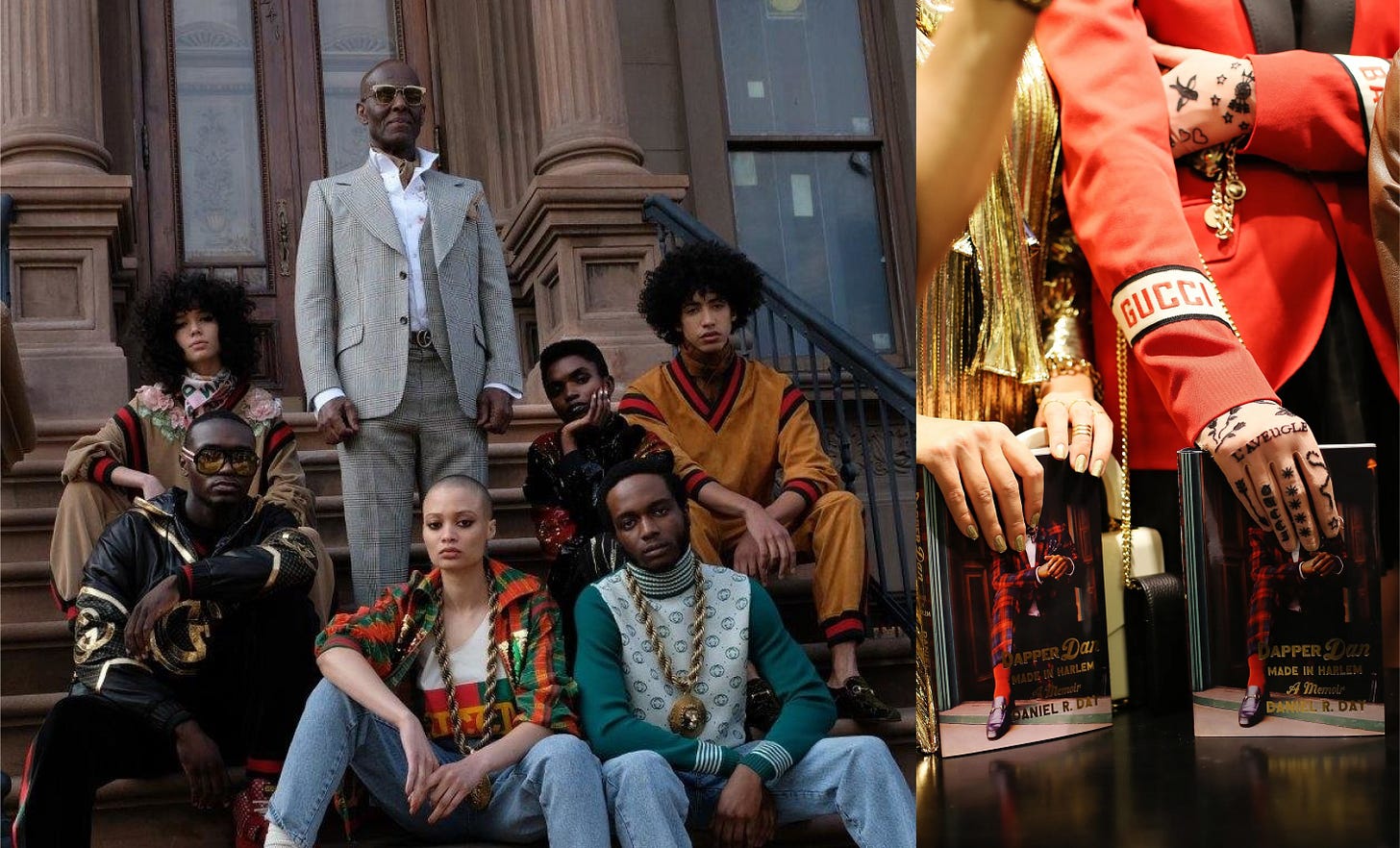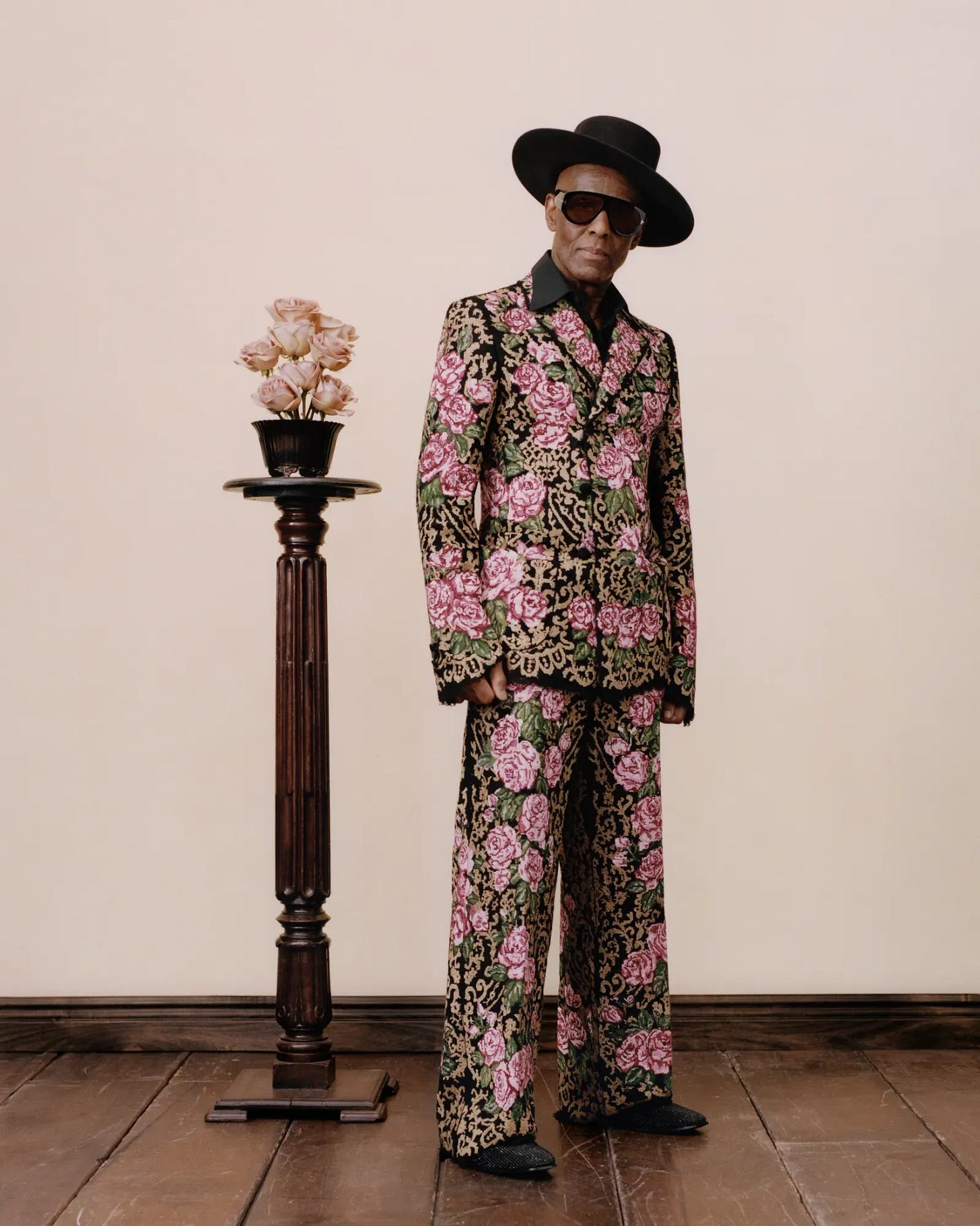From Harlem to the MET, the story of Dapper Dan | MET Gala Special Nº2
In an industry in crisis, this year's Met Gala theme and Dapper Dan's story are proof that real fashion still starts on the street - not on the online feed.
It’s been a long week and lately I've had countless ideas about what to write here, but one topic keeps coming up - one that I find difficult to articulate clearly because it's multi-layered, complex and open to many perspectives. It's the way fashion is becoming more "trendy" and less cultural. This shift is driving short-lived sales spikes that have led to the collapse of the system as it becomes dangerously dependent on TikTok trends. Everything feels oversaturated, boring and almost impossible to keep up with.
I don't know about you, but my Instagram feed is flooded with fashion collaborations, capsule drops and daily sports tie-ins in what seems like a game of who's doing the most. And yes, brands like Adidas have had their moment recently - with strong cultural plays like the Wales Bonner partnership, the edgy Willy Chavarria show in Paris, and the latest Kith collection that fuses lifestyle with streetwear staples (I won't mention the Miami GP Special Edition because it was a very boring and unimpressive capsule)
These smart collaborations are helping Adidas stay relevant -for now- while brands like Nike seem to be having an identity crisis. On the ready-to-wear side, labels like Gucci show up at Fashion Week with little creative direction - as if nothing is happening, when what's really happening is that the cultural core is missing.
Take Coachella. It used to be the perfect mix of music, fashion, and cultural pulse. Now? It's just a selfie-fuelled event, a box to tick for social currency. I recently read a piece from
’s SportsVerse newsletter (my favourite), which nailed it. While fashion weeks and ready-to-wear brands spiral, sportswear labels are adapting by embracing personal style."Ever since sports-fashion entered the zeitgeist, influential brands have been pushed to chase a turbocharged trend cycle, rather than dictate it. The result? Homogenisation. Everyone is dressing the same way. Everyone is wearing the same brands. Brands are pushing the same aesthetics in their marketing."
That really hit hard, Daniel. And I couldn't agree more. The fact that once-powerful brands are losing their ability to influence is worrying. We're now living in a media landscape that thrives on impulse, not loyalty—on virality, not culture. And that culture is exactly what once made fashion names iconic.
This is why we're seeing exclusive formats like The Row's no-phone runways gaining traction, and why people are turning to vintage and thrifted pieces with growing excitement. When everyone dresses the same, individuality becomes the real luxury—a uniqueness that's almost impossible to find today (except perhaps in emerging designers), and which used to be essential. Even street style, born as a reaction to cultural movements, is now fighting to hold its ground against the tide of trend-chasing.
"No culture has influenced streetwear more than Black culture. It's not a trend—it's the origin"
This is a phrase from a book that I personally own, and which struck me when reflecting on the crisis in the fashion environment: The Complete Guide to Street Fashion and Culture by Highsnobiety (highly reccomended). A sentence I particularly agree with and that is perfect for this Met Gala, happening under the theme "Superfine: Tailoring Black Style." Hosted by Colman Domingo, Lewis Hamilton, A$AP Rocky, Pharrell Williams, and Anna Wintour, with LeBron James serving as an honorary chair, this year's event is all about paying tribute to and showcasing the power of Black fashion and styling through the years—not only in streetwear but specifically through tailoring.
The dress code is "Tailored for You" a nod to the exhibition's focus on menswear and suiting that's sure to bring out the sartorial creativity of this year's attendees. You can find my latest newsletter with behind-the-scenes details of how the May Chairman's covers were made.
Build culture, not trends
I think this year's theme is special and makes perfect sense in a period where fashion is particularly lost. The only way out is to not let trends define style for two-week periods but to go back and see heritage, quality materials, proper fits, and tailored couture and Black Dandyism knows a lot about it. For those unfamiliar (or if you did not read my last piece), Black Dandyism is the special and curated attention to how someone dresses. As Monica Miller, author of the book that inspired this year's theme, defines it: "dressing wisely and well"
And I think there lies the whole point—there is a purpose, a need, something to tell. She describes it as "a strategy and a tool to rethink identity, to reimagine the self in a different context. To really push a boundary—especially during the time of enslavement, to really push a boundary on who and what counts as human, even."
Black people have historically used fashion as a tool to be seen, to raise their voices and to grow their culture by integrating it through art, music and sport, just like the chairmen: Pharrell, Hamilton, Domingo or A$AP Rocky (and LeBron James as honorary chairman)
A$AP Rocky has been shaping fashion's visual language since the early 2010s. His 2016 collaboration with Guess Originals revived '90s nostalgia through a hip-hop lens, incorporating denim and logo tees inspired by the brand's iconic styles. We've seen him touch the motorsport world through Puma and give the perfect example of dandyism whilst on court—with incredible suit pieces and soft-launching with class his new role as Creative Director at Ray-Ban.
Colman Domingo—nobody does red carpets like him. A fan of giving a feminine touch to his tailored looks, and a great ambassador for Black dandyism and elegance. Valentino has been his go-to choice recently, since Alessandro Michele joined the firm.
Lewis Hamilton has become the star of sports fashion, especially in F1 where until him only team kits were allowed. He reinvented the way athlete fashion is perceived, particularly in motorsports, collaborating with designers like Kenneth Nicholson and Wales Bonner to bring his Black identity and roots to a sport that has seen him as the first Black driver.
Pharrell Williams, whose current role as Louis Vuitton Men's Creative Director makes him a living bridge between black cultural influence and high fashion institutions. Known for his visionary eye and ability to blend streetwear codes with luxury aesthetics, Pharrell embodies the essence of this year's theme. As someone who has consistently pushed boundaries, from the Billionaire Boys Club to LV's Paris catwalks, Pharrell represents a new chapter where the gatekeepers of fashion are finally those who have built the culture from the ground up.
LeBron James, co-founder of UNINTERRUPTED, has merged sport and fashion through his Nike LeBron and by investing in designers via his media company, SpringHill.
But there is one figure who perfectly represents the black dandy and who has had a huge cultural impact on black culture and fashion in general: Dapper Dan, someone who has had such an impact on black and street fashion culture that he has inspired some of the best collaborations in the sports scene and who is sure to be one of the personalities at this year's MET. And the main character of today's newsletter.
The Dandy from Harlem
Before the arrival of the New York fashionistas, Dapper Dan (born Daniel Day) was an underground legend on Harlem's 129th Street with the boutique he opened on 125th Street. There, he started doing (in a very ingenuous way) something as illegal as iconic, breaking all the rules of luxury fashion by printing the logos of the most famous companies, such as Gucci, Louis Vuitton or Fendi, on leather jackets and custom fur coats. These clothes were aimed at rappers and hustlers, who, thanks to their economic power, would be the ones to define street style.
Dapper Dan became the creator of Gangster Chic and one of the key figures in giving rap culture a visual identity and signature style, taking fashion from the streets of Harlem to stars like Mike Tyson. Although he soon became a cultural icon, in 1992 the law came after him and the police shuttered his original shop—something that couldn't interrupt a legacy already deeply rooted in fashion.
Like all icons, after a breakdown there's always a comeback. And for Dapper Dan, that return only made him more influential. Gucci eventually invited him to open an official Harlem atelier under their brand—a culmination of what he started back in the day: the possibility to merge street and rap culture with high-end fashion. His presence at this year's Met Gala makes perfect sense—not just for the real trendsetter he was and the way he shifted perceptions of luxury, but because his current role is about elevating Harlem's sartorial heritage through his atelier, putting the streets of Harlem and Black tailoring at the centre of global fashion.
He even left his mark on sportswear in recent years with some of the coolest, most meaningful collaborations. With DAP GAP, his collab with GAP, Dapper Dan brought his signature flair to a broader audience. The collection—featuring monogrammed hoodies and Harlem-inspired designs—was more than fashion; it was a cultural statement. "Working with GAP allows me to be a personification of my culture and spread that personification around the world," he shared. Similarly, his partnership with Puma introduced a line of retro sportswear that blended Harlem's rich aesthetic with contemporary design—proving that when you have a rooted story and something to say, fashion becomes more than just a trendy outfit.
This year’s Costume Institute exhibition spotlights Black menswear and dandyism—a tradition Dapper Dan didn’t just follow, but helped define. The Met cemented his influence by naming him to its high-profile Black host committee, placing “designer and fashion titan Dapper Dan” alongside icons like Spike Lee and Pharrell Williams. It’s a direct nod to a truth long overdue: the Met Gala’s spectacle is deeply indebted to Dan’s legacy. As he put it, without that creative foundation, “there would be no Met Gala.”
This year's Superfine is not just a retrospective. It's a cultural celebration and a guide. It asks fashion not to appropriate, but to listen. To appreciate the source, not just the surface. As Dapper Dan said in Vogue:
"You can't have streetwear without the street. And you can't have the street without Black culture."
See you next week to comment the MET!
Alba





